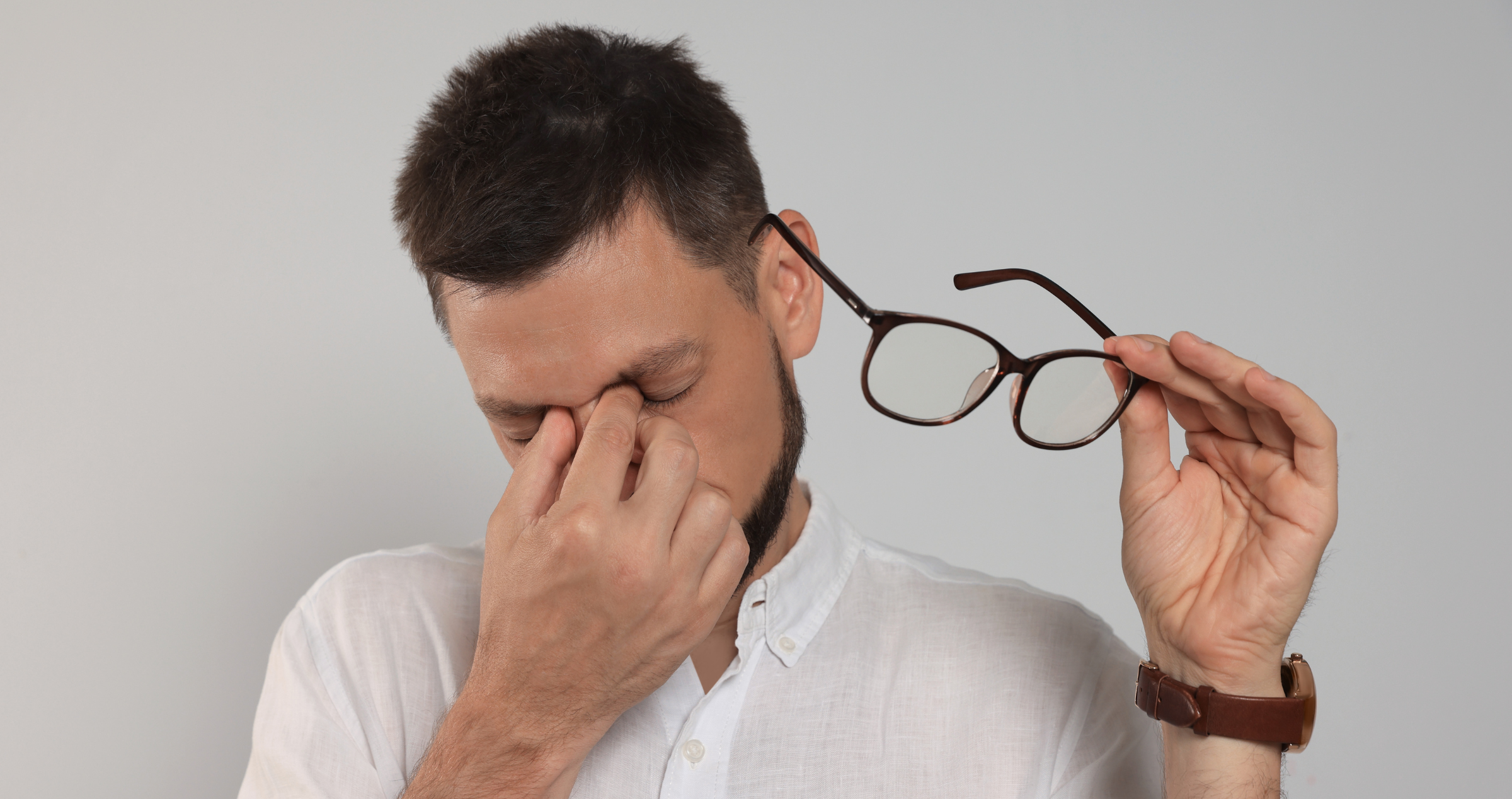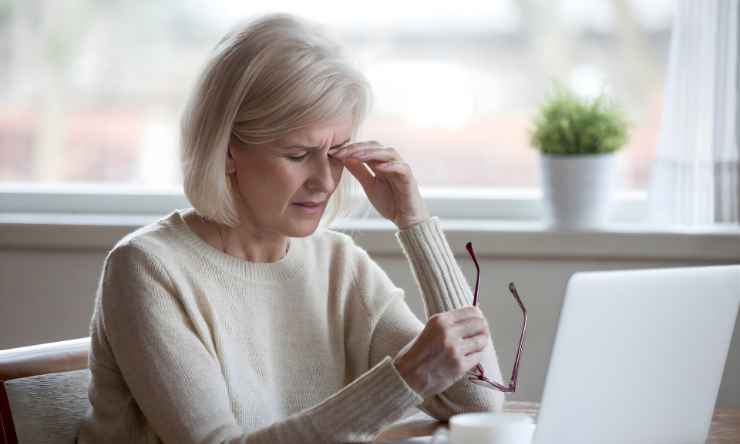Share
We recently hosted a Live Q&A with Ophthalmologist Dr David Wechsler and Optometrist Professor James Armitage about the ‘Side Effects of Glaucoma Medication’. This was a very popular topic amongst our glaucoma community who posed a lot of great questions to our speakers.
In this article, we’ve shared the key questions from this event and a summary of the speakers’ responses.

Q. How common is it for people with glaucoma to experience side effects with their medications?
When people with glaucoma begin their treatment they usually start with medical therapy or drop therapy as opposed to laser or surgery, as some people are apprehensive about undergoing procedures. You could say they see medication as the less invasive and possibly less risky option - however, that's not to say that medication can't cause various problems and experiencing side effects to them is very common.
Q. What sort of side effects do people most commonly experience?
The side effects people may experience varies on the type of medication they are taking. The most common side effects with glaucoma drops are burning and stinging as the drop goes into the eye and continued redness.
These symptoms are generally present with prostaglandin analogues which are the most common glaucoma drops and can even present irritation in other areas such as the throat when the drops run down the back of the nose. These type of side effects are referred to as “local side effects” as they occur in the area the medication is being administered. With eye drops, local side effects affect the eye and surrounding areas.
It is important to note that in some cases, systemic side effects may occur as well. These are side effects that affect other areas of the body and can be potentially very serious. For example, the class of medication we call ‘beta blockers’ can cause breathing problems, low blood pressure, dizziness, lethargy, low mood and light-headedness among other things.
So, before a patient is placed on new medications, it is standard practice to get a full medical history and information on their previous illnesses, because even completely healthy people can still develop these side effects.
Q. How many days should a person ‘put up’ with side effects before reporting to their eye care specialist?
If you’re experiencing serious systemic side effects such as problems breathing, this should be reported immediately to a doctor or present to the emergency department. If you’re in doubt, cease using the medication and discuss your concerns with your treating eye care professionals or even pharmacist or GP.
If what you’re experiencing is some of the more common local side effects, then it’s worth persisting for a couple of weeks, especially as many manufacturers suggest that symptoms can ease off after a couple weeks of use.
Ultimately it depends on how tolerable these symptoms are for the person. If you’re ever in doubt, contact your optometrist or ophthalmologist for advice. You can also call Glaucoma Australia and chat with a qualified Orthoptist Educator for advice.
Q: Why do some preservatives in glaucoma medications cause sore eyes?
Preservatives are used in eye drops to prevent contamination and bacterial contamination in the bottle once it is opened. Although it may only be a mild irritation that a person experiences, over time with continued use their eyes could develop hypersensitivity to the preservative which can heighten the side effects.
Drops have varying preservatives in them, and people can react differently to each one. One of the most common preservatives used in eye drops today is benzalkonium chloride (BAC) which is a known mild irritant.
One thing to consider if you are experiencing more severe symptoms such as swelling of the eyes, is allergies. Many people are allergic to the preservatives in eye drops and experience more irritation than usual. If a person is experiencing these symptoms, contact your treating eye health professional to diagnose the allergy and discuss the options of switching to preservative free eye drops. Preservative free eye drops are becoming increasingly more available and are a great alternative for people with allergies or extra sensitivity.
Besides the preservative, some people also develop an allergy to the actual medication in the eye drop.
Q: Where is the tear duct and how long should we press on it after instilling eye drops?
The tear duct is located in the soft spot between the nose and the eye, close to the inner corner of the eye. One way to locate the tear duct is to place your thumb in the crevice and feel for the soft spot. It’s a good idea to press down on the tear duct after instilling eye drops for 30 seconds to 1 minute to help your eyes absorb the medication and also stop it from running down into the nose, which can then lead to the medication getting into the bloodstream.
Ideally, you should not be able to feel or taste the drops in your throat after instilling. If you do, you may have to correct your technique and can seek help from an ophthalmologist or optometrist. This technique is especially important for medication such as beta blockers as they can cause systemic side effects if it travels into other parts of the body.
Q: What can a person do to reduce red eyes?
There are many causes for red eyes. Glaucoma eye drops can exacerbate dry eyes which is a common cause for redness of the eyes. Some people choose to take their glaucoma drops at night to reduce the redness by the morning. Red eyes can also be an indication of inflammation which needs to be treated with more care than regular red eyes.
The treatment for red eyes can vary depending on the medication a person is taking and the state of their glaucoma. You could for example, reduce the need for medication by exploring alternative treatments like laser. But this option will only be offered by your eye health professional depending on the levels of your eye pressure.
Sometimes eye drops can work against each other. For example, a person may be taking drops for dry eyes but are also on drops for glaucoma which make the dry eye worse, so a balance between the two can help to relieve symptoms.
If you are experiencing red eyes and discomfort, keeping the communication open with your eye health professional can help you build a sustainable treatment plan.
Q. What about itchy eyes that seem to not want to go away?
Itchiness is generally an indication of allergies. This may be allergies to the ingredients in the glaucoma drops or to other external factors such as dust mites or the environment (e.g., pollen). It may be difficult to distinguish if the itch is caused by irritation from the medication or if it is a true allergy, so a trial-and-error system may need to be implemented in your eye care. This should be done in conjunction with your eye professional and is not advised to be done alone.
Q. Does washing around the eyes after instilling glaucoma eye drops reduce the likelihood of side effects?
In terms of local side effects, washing around the eyes does have potential to reduce the likelihood of irritation. Some drops can cause issues around the eyes such as pigmentation and hair growth, and white residue if left on the skin, and so gently wiping/washing the area can reduce these disturbances. It is also important to make sure the medication is not being washed away from the eye itself, as this will disrupt the treatment process. Making sure the drops enter the sac of the eye and only wiping the excess on the skin away is essential.
Q. Is it safe to put in more drops if I don’t think the first round was instilled properly?
Instilling more than one drop most likely would not cause harm but it may increase the risk of local and systemic side effects. Making sure the drop enters the eye is a greater priority to treat your glaucoma and so if in doubt, instilling one more drop is fine.
Most eye drop bottles only hold enough drops to last one month and so if you are using more each time, you’re more likely to run out of drops quicker and prescriptions may need to be filled more often, so it is worth mentioning this to your eye health professional.
Support and education about how to use eye drops effectively can also be accessed through your eye professional and Glaucoma Australia’s support line. You can also consider eye drop aids if you are struggling to with using the eye drop bottles. Glaucoma Australia’s online store has some great options to explore.
Q. Some patients consider giving the glaucoma drops a break for a few days to figure out if the side effects are related to the drops. Can optometrist help with this decision?
If you’re hoping to test this, chat with your optometrist or ophthalmologist first as they can help you narrow down the cause of symptoms experienced. It is important to do this in conjunction with your eye health professional so they can assess whether this method is appropriate and monitor eye pressure.
Q. If you stop putting the drops that cause side effects in your eyes do the side effects go away?
Some side effects related to your eye drops are generally not permanent and go away when you stop the medication causing it. Systemic side effects caused by medication such as beta blockers are also reversible and can be alleviated when you stop using the medication.
Local side effects like the deepening of the eye socket are irreversible however, and cessation of the medication will only stop the progression. Rarer side effects such as permanent wearing out of the eye surface are also irreversible and something to consider if you have concerns.
The washout period may vary from person to person and depends on what medication is being used and how often, but generally the body will wash it out of its system regardless.
Q. For patients going through the public hospital system, if they experience side effects with their eye drops in between appointments, can they put their drops on hold until the next appointment?
Being treated in the public hospital system may mean you see different doctors at different times, and there may be less flexibility with appointments but the same principles apply. It would not be advisable to go without medication for long periods, but if the side effects are significant then this should be brought to the attention of the treating team.
If you are experiencing serious side effects such as shortness of breath, stop using the medication immediately and visit the emergency department if needed. All public hospital eye departments will have a system for dealing with eye emergencies also, so if there are serious reactions you can seek attention even if it is not with the usual doctor.
For less serious problems you can also visit your optometrist or GP to have your side effects assessed. Your optometrist can perform regular eye exams to check your pressure and inflammation to make sure the glaucoma is not advancing in the time between appointments as well.




